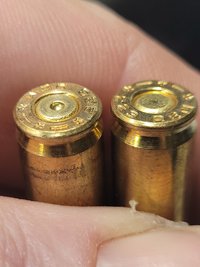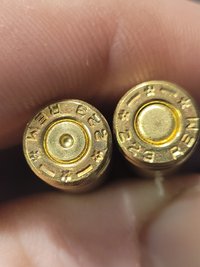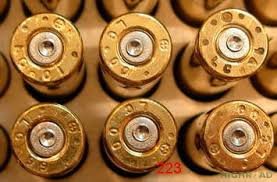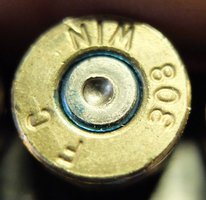xtry51
NES Member
This is what I'm talking about when I say "flattening" the primer. This a fired next to unfired 77gr Sierra HPBT over 24.5gr of Varget. If you look at the perimeter of the primer, the radius has gotten smaller on the fired cartridge when the primer was forced against the bolt face. This flattening is the first sign you are approaching max safe loads.
(Pics are from my rounds)


The next danger sign after flattening is "cratering". This is when the primer begins to mold itself around the firing pin causing metal to flow into the tiny gap between your bolt and the firing pin. It creates a raised lip around the primer strike that makes the strike look like a meteor impact crater. It can be felt when dragging a fingernail across. If you see this happening STOP and back your powder load down.
(Pics not mine)


If you load beyond primer cratering you will pierce a primer and damage your gun when the hot gases escape thru the primer shell and melt your bolt face or firing pin.
(Pics are from my rounds)


The next danger sign after flattening is "cratering". This is when the primer begins to mold itself around the firing pin causing metal to flow into the tiny gap between your bolt and the firing pin. It creates a raised lip around the primer strike that makes the strike look like a meteor impact crater. It can be felt when dragging a fingernail across. If you see this happening STOP and back your powder load down.
(Pics not mine)


If you load beyond primer cratering you will pierce a primer and damage your gun when the hot gases escape thru the primer shell and melt your bolt face or firing pin.
